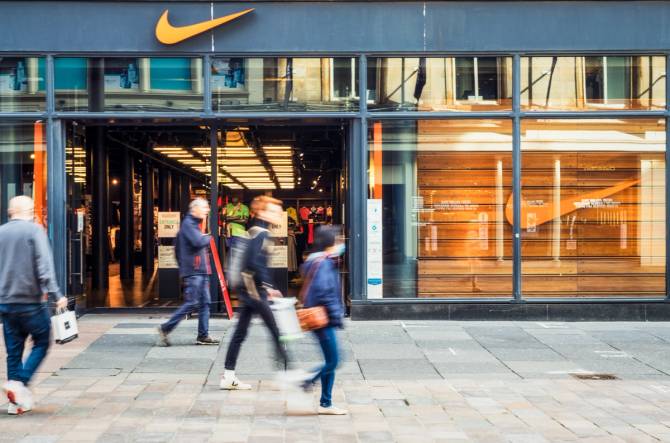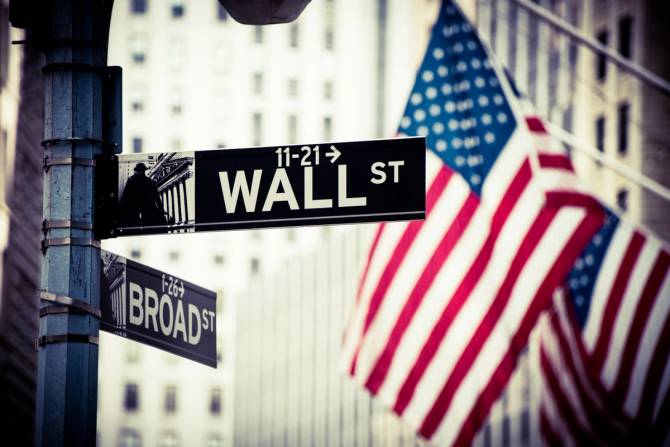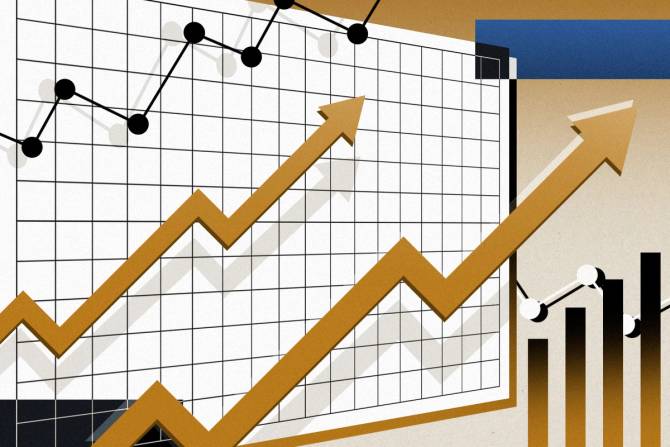Today’s the day: The Fed’s July meeting wraps, and it’s widely expected to raise interest rates by 75 basis points again. Will it curb inflation? The official consensus seems to be ¯\_(ツ)_/¯.
In this issue:
—Kim Lyons, Drew Adamek, Kristen Talman
|
|
Getty Images
Nike’s 2021 first-quarter results contained some bad news for investors and the company. Like many companies last year, the Oregon-based sports apparel and sneaker manufacturer was seeing pent-up demand for its products, but global supply-chain disruptions meant they weren’t getting to customers.
But Nike had an advantage that other companies didn’t: It had been pivoting away from a retail wholesale model to a digital-first, direct-to-consumer model, a key strategic initiative years in the making. So the global supply-chain mess pushed the company to intensify the adoption of its new supply-chain technologies.
“As we accelerate our consumer-led digital transformation, we are developing and refining new capabilities that are transforming our operating model, quickly becoming a competitive advantage for Nike,” the company’s EVP and CFO Matt Friend said during its 2022 Q1 earnings call with investors.
Supply-chain uncertainty is likely to linger well into next year. To maintain a competitive edge, companies are looking to invest in digital supply-chain technology now and in the future. Not every company is going to be able to pivot to a more digital supply chain on the scale that Nike has, but recognizing the need to meet customers where they are will likely drive a lot of the digital shift.
“The vast majority of companies’ supply-chain organizations see technology as a source of competitive advantage, or competitive disadvantage,” said Dwight Klappich, research vice president and Gartner fellow at Gartner’s Logistics and Customer Fulfillment Team.
Clear line of sight. Supply-chain digitization is an integral part of Nike’s “Consumer Direct Acceleration” strategy, which aims to create direct-to-consumer platforms such as websites, apps, and Nike-owned stores to sell directly to customers. Continue reading.—DA
|
|
TOGETHER WITH ORACLE NETSUITE
|
|
Inflation markers are at a four-decade high—which is no surprise if you’ve gone grocery shopping lately.
But if you’re in charge of your company’s finances, tracking those inflation indicators is essential. Fortunately, there’s a guide for that.
In CFO’s Guide: 4 Inflation Metrics to Watch Now, Oracle NetSuite outlines the main markers the federal government uses to measure the inflation rate. You’ll also learn about a few key supplemental indicators that could make a huge difference when it comes to predicting trends.
Like it or not (we do not like it), inflation is here. So let this guide help you make data-driven business decisions, increase prices without losing customers, and plan for whatever comes next.
Download it here.
|
|
Getty Images
Over the past several weeks, the largest US banks have released earnings best described as “not that bad”—kinda like when you study for a test 30 minutes before taking it and still end up with a B. While second-quarter profits were down at the largest banks in the US, lending (or borrowing) was up for Bank of America and JP Morgan Chase & Co., meaning that consumers continue to spend.
Since the Federal Reserve raised interest rates by 75 basis points in June, analysts have hawkishly awaited bank earnings to indicate how the macro US market will perform for the remainder of 2022, as banks have portfolios that touch nearly all sectors of the economy.
Even though banks’ earnings were rosier than analysts expected, there’s still plenty of chatter about a possible recession, although not always on the banks’ official earnings calls.
“There are very good current numbers taking place. Consumers are in good shape. They’re spending money. They have more income…Businesses, you talk to them, they’re in good shape…we’ve never seen business credit be better ever in our lifetimes, and that’s the current environment,” JPMorgan Chase CEO Jamie Dimon said on the company’s earnings call. Dimon warned that “the future environment, which isn’t that far off, involves rates going up, maybe more than people think because of inflation.”
At the company’s investment day conference in June, however, Dimon was a lot more gloom-and-doom, saying there were “big storm clouds” on the economic horizon. Continue reading.—KT
|
|
TOGETHER WITH ORACLE NETSUITE
|
|
Prep for pricing swings. Unless you managed a business in 1982, you’ve never seen inflation numbers like this. So download Oracle NetSuite’s new guide to learn the four main inflation markers and how to track them efficiently. Planning for an uncertain future isn’t easy, but this guide makes it a little easier.
|
|
Juanmonino/Getty Images
Perhaps the most-watched (and tweeted) deal so far this year has been Elon Musk’s attempt to take over Twitter. The CEO of Tesla and SpaceX, Musk at first pledged to take the social media giant private once the deal closed. With that deal now in jeopardy, it doesn’t seem that $TWTR will be leaving the New York Stock Exchange anytime soon (at least, not before October).
Going private can be an arduous process, and even for private-equity (PE) firms, buying a company with the intent of taking it private isn’t always cheap or easy.
One big appeal of going private—especially for a company like Twitter—which has been criticized for failing to innovate quickly enough for investors’ liking—is that it can potentially reduce the amount of public scrutiny on its every move. In a turbulent public market, some private-equity firms are looking toward companies that are beginning to show signs of distress —ones that have taken on too much debt on their balance sheets.
Going private in a volatile market can have its upsides—decreased reporting costs, less investor pressure, and a shield from the scrutiny of the ever-watching public eye. That is not to say it’s smooth sailing; private companies tend to have a harder time raising cash, since they cannot access public market money as easily. If they are in need of additional investment, private companies need to sway investors with potential versus reported metrics.
PE firms are known for buying businesses, overhauling their current practices, management, and workforce with the hope of increasing performance, and then selling the asset—aka turning a withering business into a blossoming one. Continue reading.—KT
|
|
Francis Scialabba
Stat: $85 million. That’s how much two chicken companies agreed to pay to settle claims that they “violated antitrust laws by sharing information about poultry workers’ wages.” (the Wall Street Journal)
Quote: “My hope is we go from this rapid growth to a steady growth. And so, we’ll see some coming down. But…God willing, I don’t think we’re going to see a recession.”—President Biden to reporters on Monday, ahead of Thursday’s release of second-quarter GDP numbers (CNN)
Read: I scream, you scream…because thanks to fuel prices, inflation, and changing consumer behaviors, ice cream trucks are becoming a thing of the past. (the New York Times)
|
|
-
The International Monetary Fund cut global growth projections for the rest of 2022 and 2023; it expects the global economy to grow by just 3.2% this year and called the outlook “gloomy and more uncertain.”
-
Home prices in the US were 19.7% higher in May than a year ago according to the S&P CoreLogic Case-Shiller National Home Price Index. That’s down from the year over year April gain of 20.6%.
-
Shopify is reportedly laying off 1,000 workers, roughly 10% of its workforce as online shopping trends that grew during the pandemic begin to slow.
-
Amazon will raise the price of its Prime memberships in Europe by up to 43% beginning in September, citing “increased inflation and operating costs.”
|
|
|







